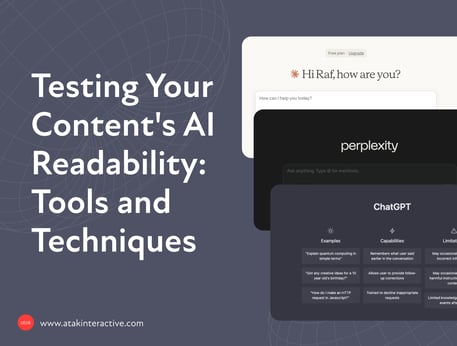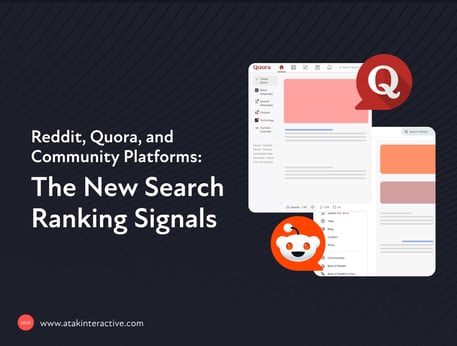RevOps and AI: Practical Applications Beyond the Hype
RevOps and AI: Practical Applications Beyond the Hype
Every B2B company's talking about AI these days. But between the marketing fluff and ambitious promises, there's a practical question most RevOps leaders are asking: What can AI actually do for my revenue operations today?
The answer is more than you might think — and less than the hype suggests.
While AI won't magically fix your broken sales processes or clean up years of messy CRM data overnight, there are specific, measurable ways AI is already helping RevOps teams work smarter. Let's cut through the noise and focus on what's actually working.
Where AI Makes Real Impact in RevOps

1. Predictive Lead Scoring That Actually Predicts
Traditional lead scoring relies on static criteria — job title, company size, downloaded content. AI-powered lead scoring analyzes hundreds of behavioral signals to predict which leads are most likely to convert.
What it looks like in practice:
- Your CRM automatically scores leads based on email engagement patterns, website behavior, and similar customer profiles
- Sales teams focus on leads with 80%+ conversion probability instead of chasing every form fill
- Marketing can adjust campaigns in real-time based on lead score trends
ROI example: One of our manufacturing clients saw a 34% increase in sales efficiency after implementing AI lead scoring. Their sales team spent less time on dead-end prospects and more time closing deals that mattered.
2. Conversation Intelligence for Sales Performance
Conversation intelligence platforms like Gong and Chorus use AI to analyze sales calls, identifying what separates winning deals from losses.
Practical applications:
- Automatic call summaries and next steps
- Coaching insights based on successful call patterns
- Early warning signals for deals at risk
- Competitive intelligence from customer conversations
Implementation reality: This isn't plug-and-play. You need consistent call recording, proper data hygiene, and sales team buy-in. But when implemented correctly, it transforms how sales managers coach their teams.
3. Automated Data Enrichment and Cleansing
AI can automatically fill in missing contact information, standardize company names, and merge duplicate records. More importantly, it can flag data quality issues before they become problems.
What this solves:
- Incomplete contact records that hurt email deliverability
- Duplicate accounts that skew reporting
- Outdated information that wastes sales time
- Inconsistent data entry across teams
The reality: AI data enrichment is only as good as your data sources. You still need proper data governance and regular audits.
4. Churn Prediction with Actionable Insights
AI can analyze customer behavior patterns to predict which accounts are at risk of churning — and more importantly, suggest specific actions to prevent it.
Key indicators AI tracks:
- Declining product usage or engagement
- Support ticket patterns and sentiment
- Payment delays or contract negotiation signals
- Reduced stakeholder engagement
The value: Instead of reactive churn management, your customer success team can proactively intervene with personalized retention strategies.
Implementation Roadmap: Getting Started with AI in RevOps
Phase 1: Foundation (Months 1-2)
- Audit your current data quality
- Establish clear success metrics
- Choose one AI application to pilot
- Get stakeholder alignment on expectations
Phase 2: Pilot Implementation (Months 3-4)
- Deploy your chosen AI tool with a small team
- Monitor results and gather feedback
- Refine processes based on early learnings
- Document what works and what doesn't
Phase 3: Scale and Optimize (Months 5-6)
- Roll out successful pilots to broader teams
- Integrate AI insights into existing workflows
- Train teams on new processes
- Measure impact against baseline metrics
Calculating ROI: What to Measure

Don't just track vanity metrics. Focus on business outcomes:
Sales Efficiency:
- Time saved on lead qualification
- Increase in qualified opportunities
- Shorter sales cycles
- Higher close rates
Data Quality:
- Reduction in duplicate records
- Improved email deliverability
- Better reporting accuracy
- Less time spent on data cleanup
Customer Retention:
- Earlier churn detection
- Improved customer satisfaction scores
- Increased renewal rates
- Higher expansion revenue
The Reality Check: What AI Can't Do
Let's be honest about limitations:
AI won't fix broken processes. If your sales and marketing teams aren't aligned, AI will just make your misalignment more efficient.
AI requires clean data to work well. Garbage in, garbage out still applies. You need proper data governance before AI can deliver value.
AI isn't a substitute for strategy. It's a tool that amplifies good decisions and reveals insights, but human judgment remains critical.
AI implementation takes time and resources. Budget for training, integration, and ongoing optimization — not just the software cost.
Getting Started: Your Next Steps
If you're ready to move beyond AI curiosity to actual implementation:
- Start with your biggest pain point. Don't try to solve everything at once.
- Get your data house in order. Clean, standardized data is the foundation of effective AI.
- Choose tools that integrate with your existing tech stack. The best AI tool is the one your team will actually use.
- Measure everything. Track baseline metrics before implementation so you can prove ROI.
- Plan for change management. Your team needs training and support to adopt new AI-powered workflows.
The companies winning with AI in RevOps aren't the ones with the flashiest tools — they're the ones with clear processes, clean data, and realistic expectations about what AI can and can't deliver.
Ready to explore how AI can enhance your revenue operations? Start with one practical application, measure the results, and build from there. The future of RevOps isn't about replacing human expertise — it's about amplifying it with intelligent automation.



